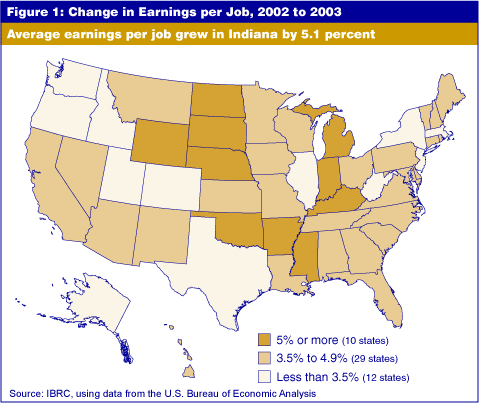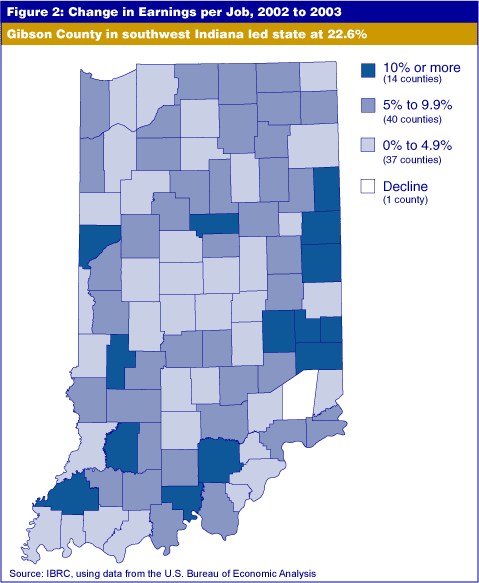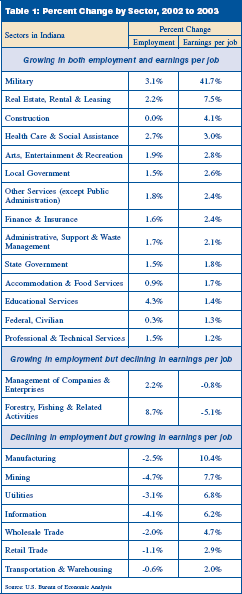What Do We Want?
If we had a choice, would Hoosiers choose more jobs or higher-paying jobs? More jobs is the short-hand for a better economy. Higher-paying jobs might sound like a program designed for an elite group within the society. Higher pay may also be associated with working longer hours or working under more stressful conditions.
The number of jobs in Indiana increased slower than in the nation (0.2 percent vs. 0.3 percent) between 2002 and 2003 (using the most recent data from the U.S. Bureau of Economic Analysis). At the same time, the total earnings of workers in the state advanced by 5.4 percent while the U.S. gain was 4.1 percent.
As a result, average earnings per job grew in Indiana by 5.1 percent while the national advance was only 3.8 percent. For the year, Indiana ranked ninth in growth of average earnings per job (see Figure 1).

Within Indiana, the range of growth in earnings per job went from a high of 22.6 percent in Gibson County (largely attributable to Toyota) to a low of -0.6 percent in Ripley County (see Figure 2).

In dollar terms, the average job in Indiana gained $1,862 in 2003, $287 (18
percent) more than in the United States as a whole. But which sectors of the
economy gave us this lead?
Of 23 sectors in Indiana, 21 grew in earnings per job, led by the military
(see Table 1). The second fastest-growing sector was manufacturing
(10.4 percent), which was one of seven sectors that declined in employment
(-2.5 percent). Only two sectors had employment growth and a decline in earnings
per job. As seen by the forestry sector, employment growth (8.7 percent) can
be associated with a decline in average earnings per job (-5.1 percent). These
data cannot tell us how much of these changes is the result of added overtime
in manufacturing or the creation of entry-level jobs in forestry.
From a policy point of view, we need to focus on both employment and the earnings derived from existing and new jobs.
Morton J. Marcus
Director Emeritus, Indiana Business Research Center,
Kelley School of Business, Indiana University

